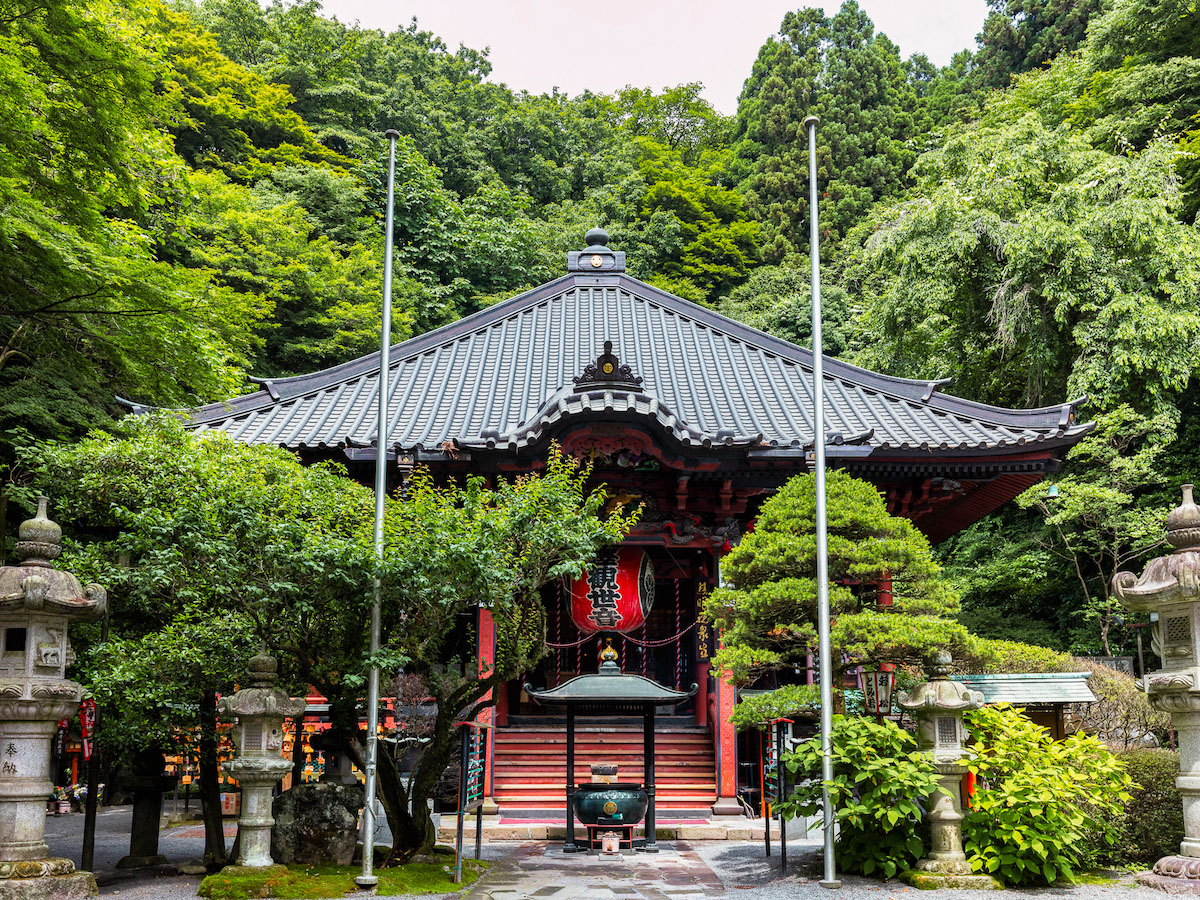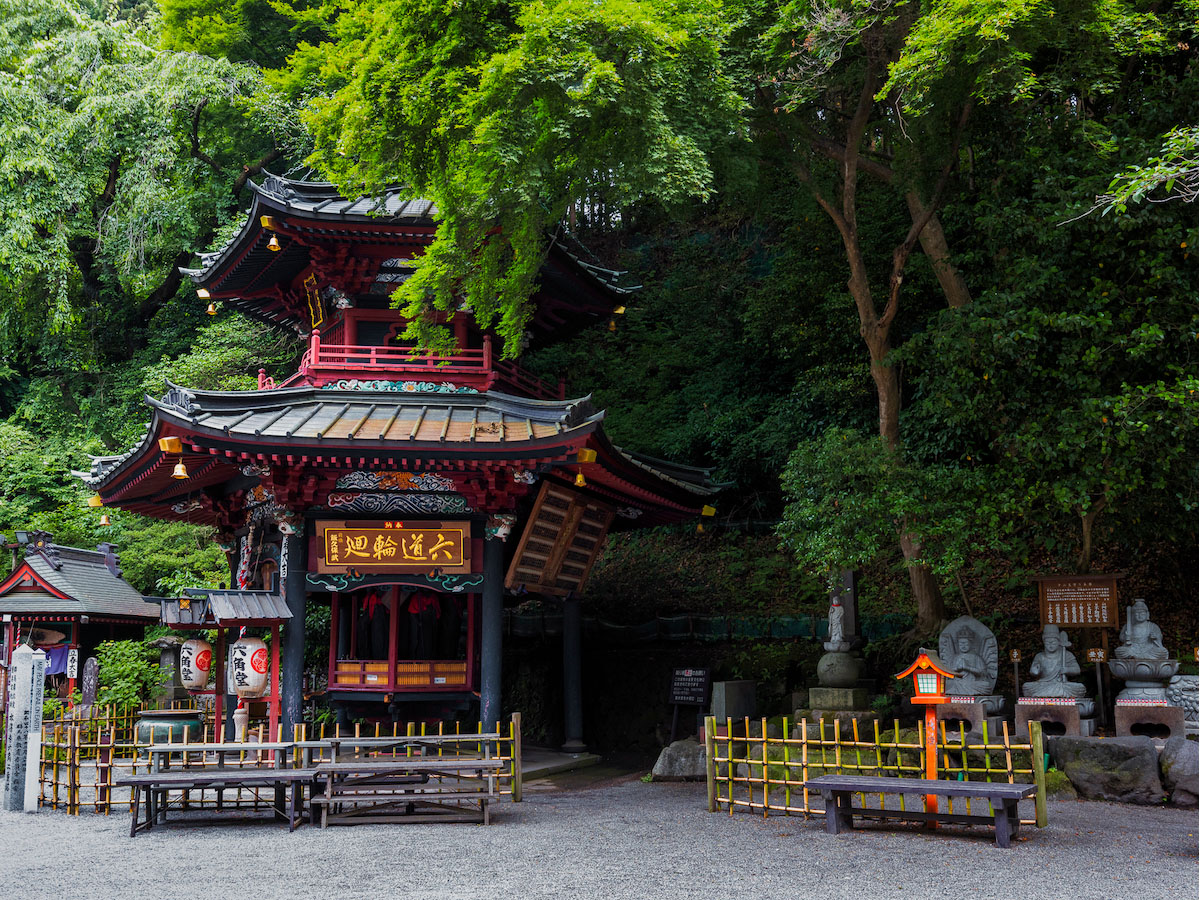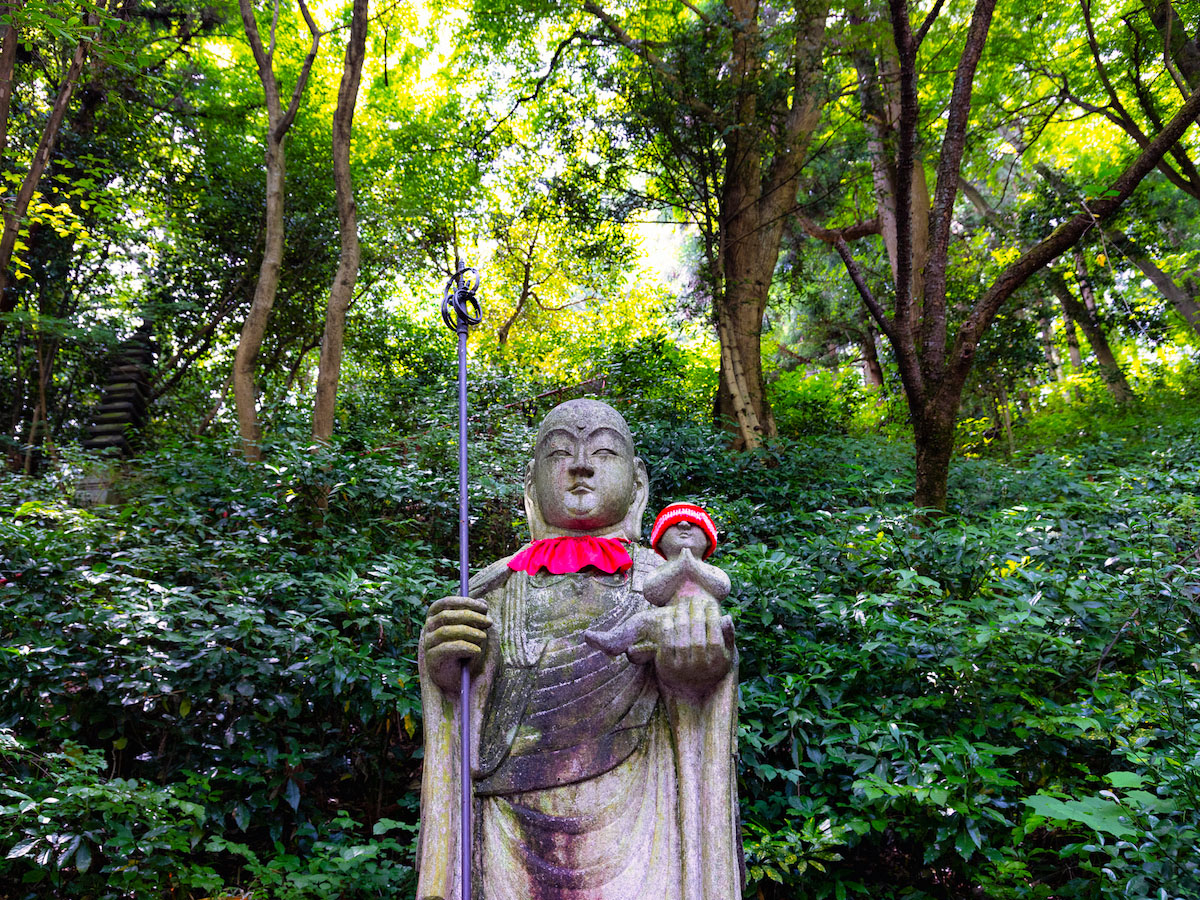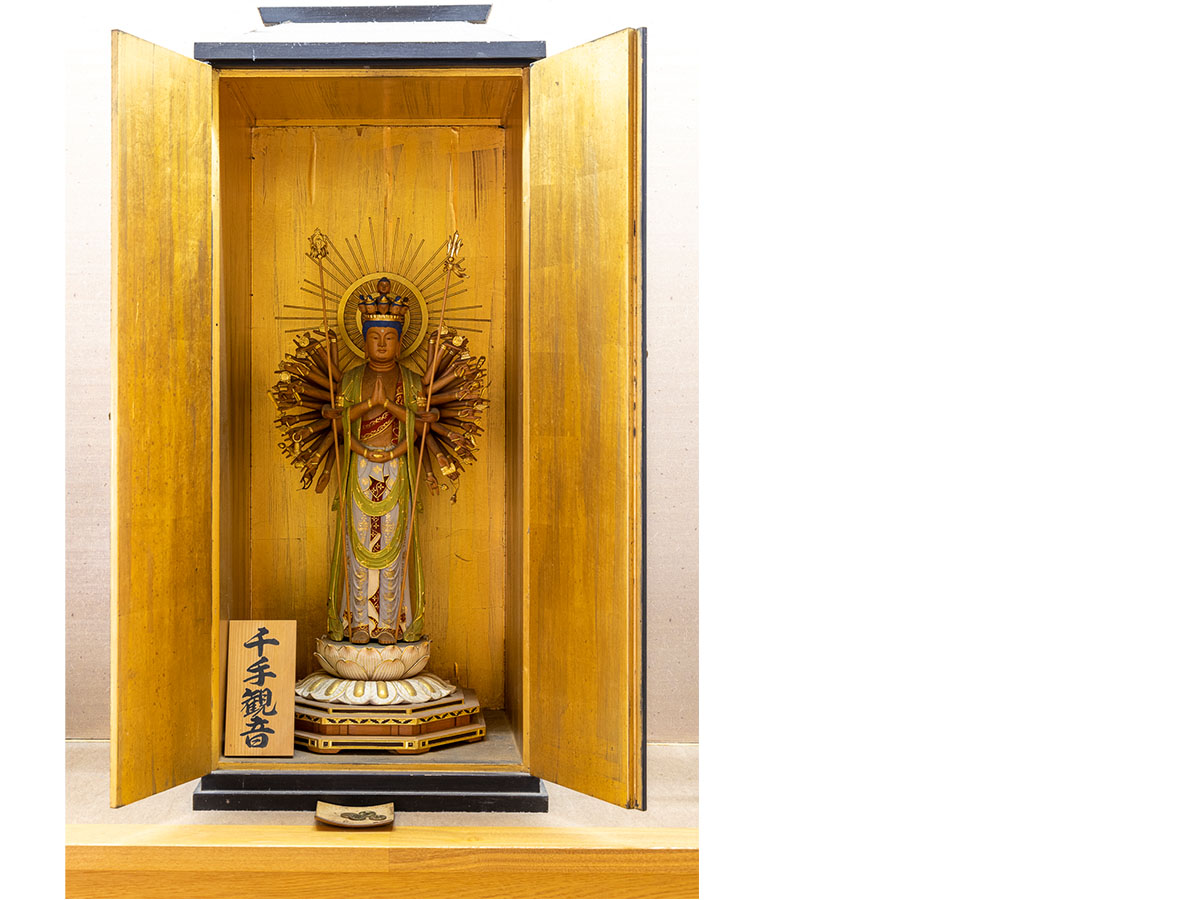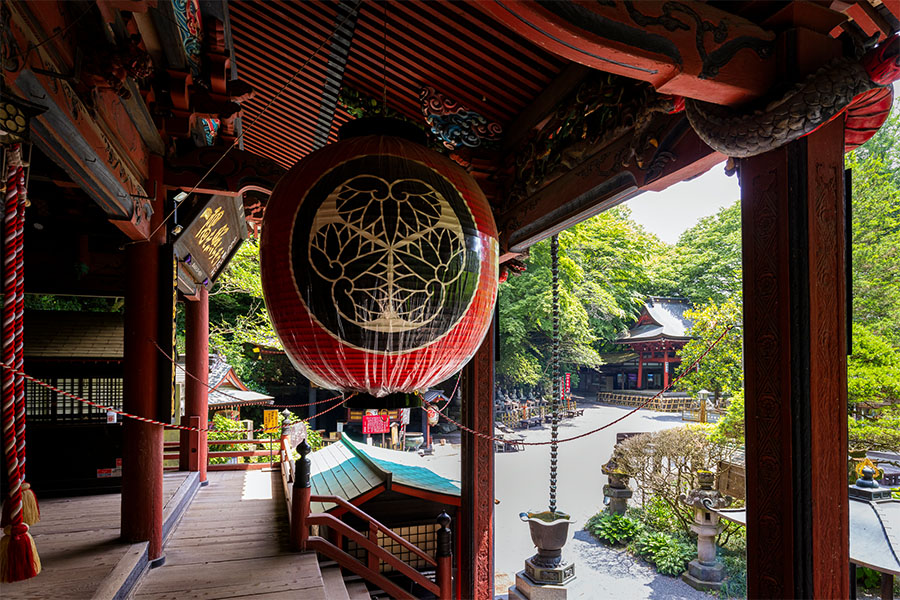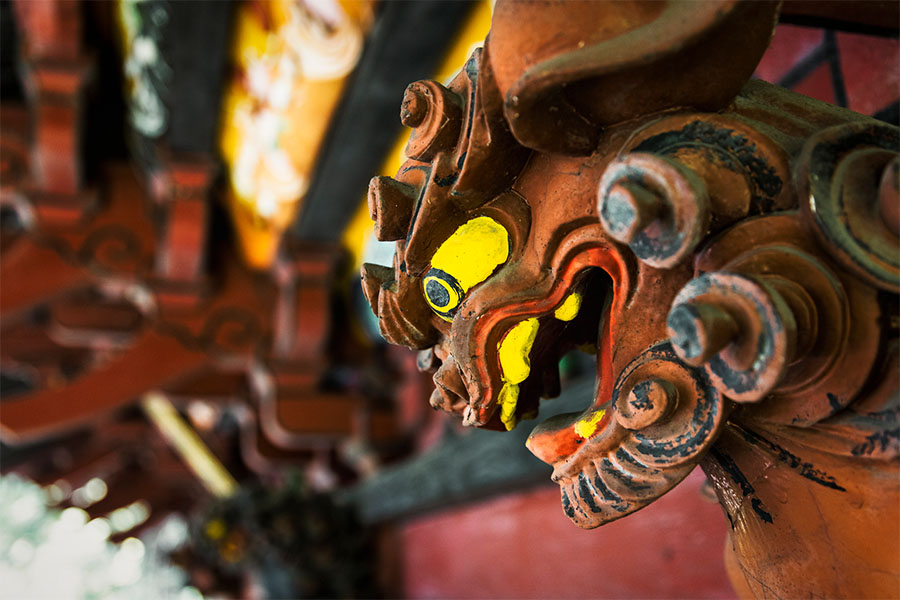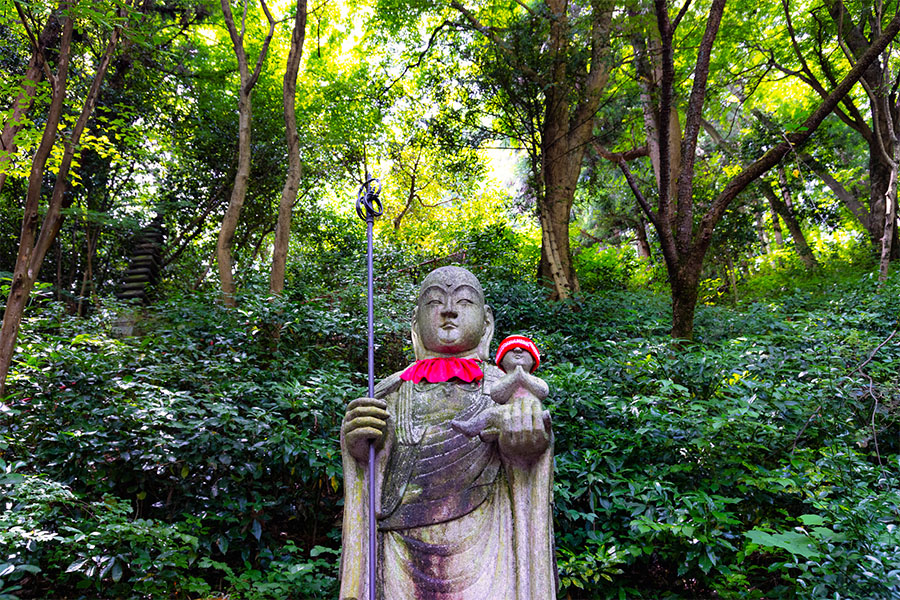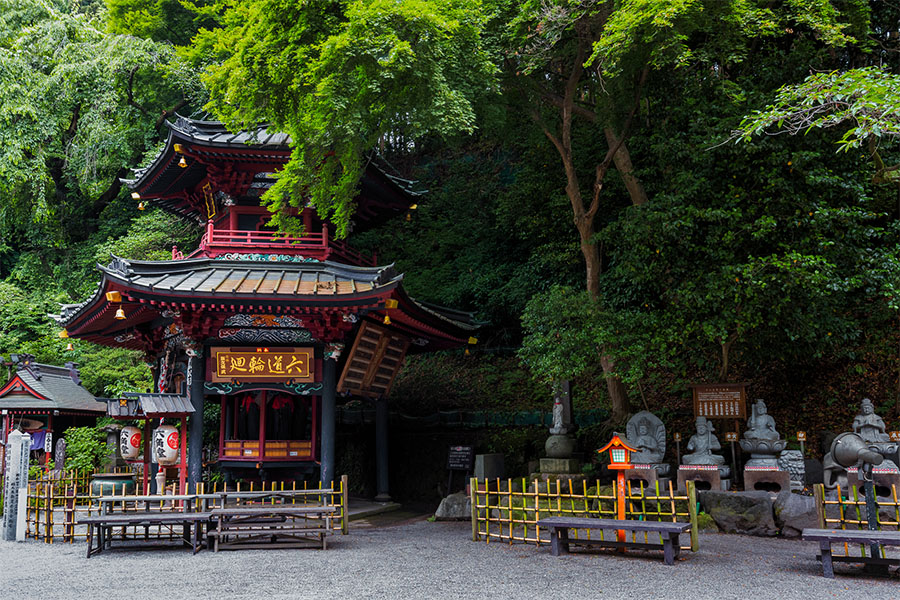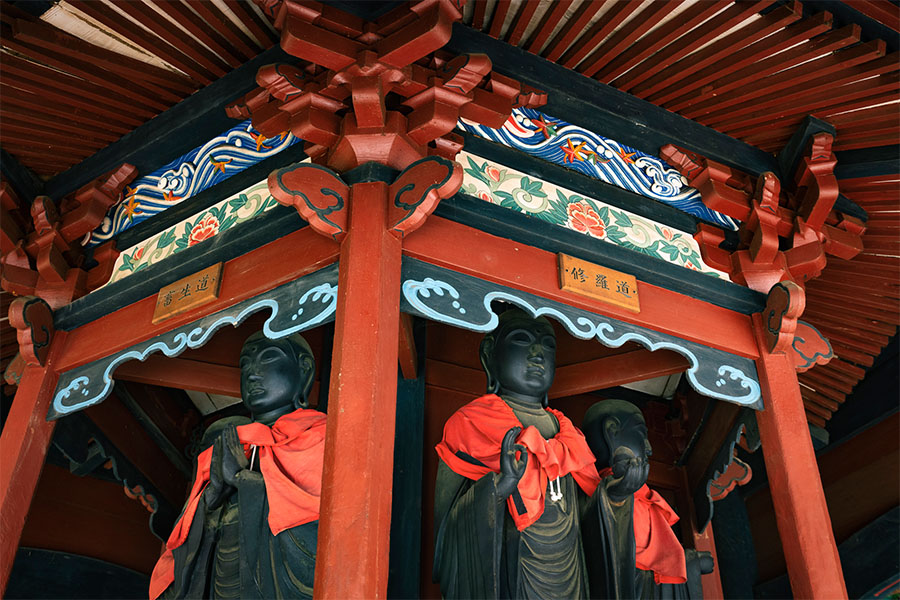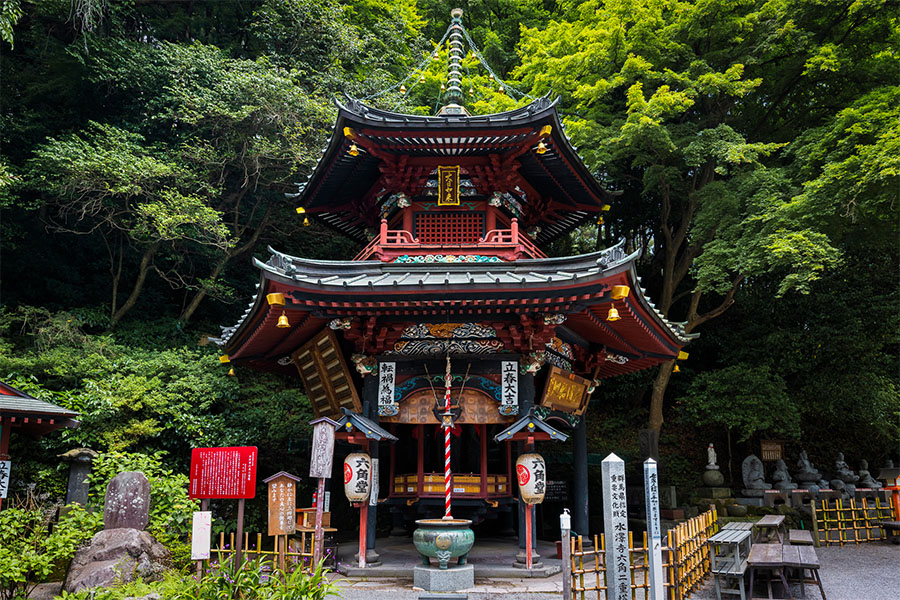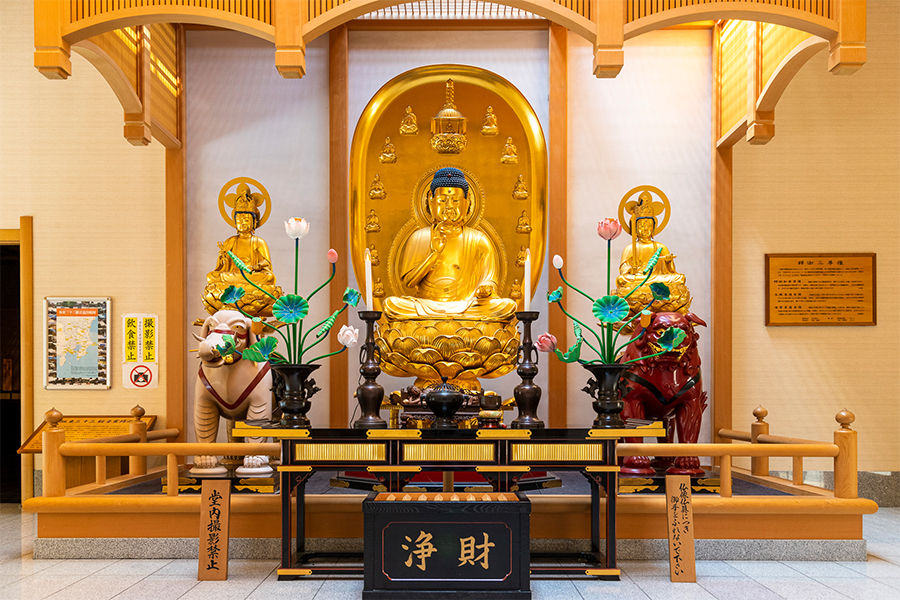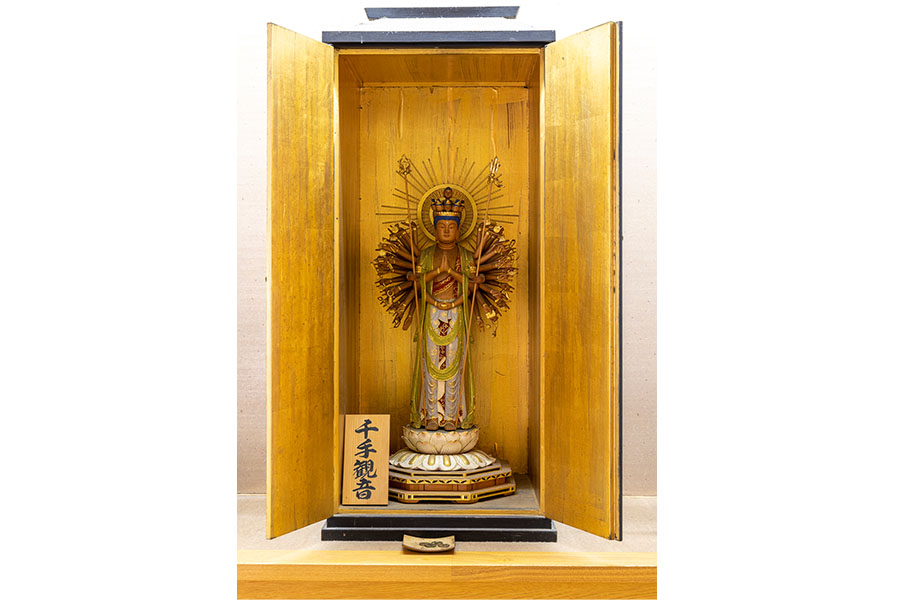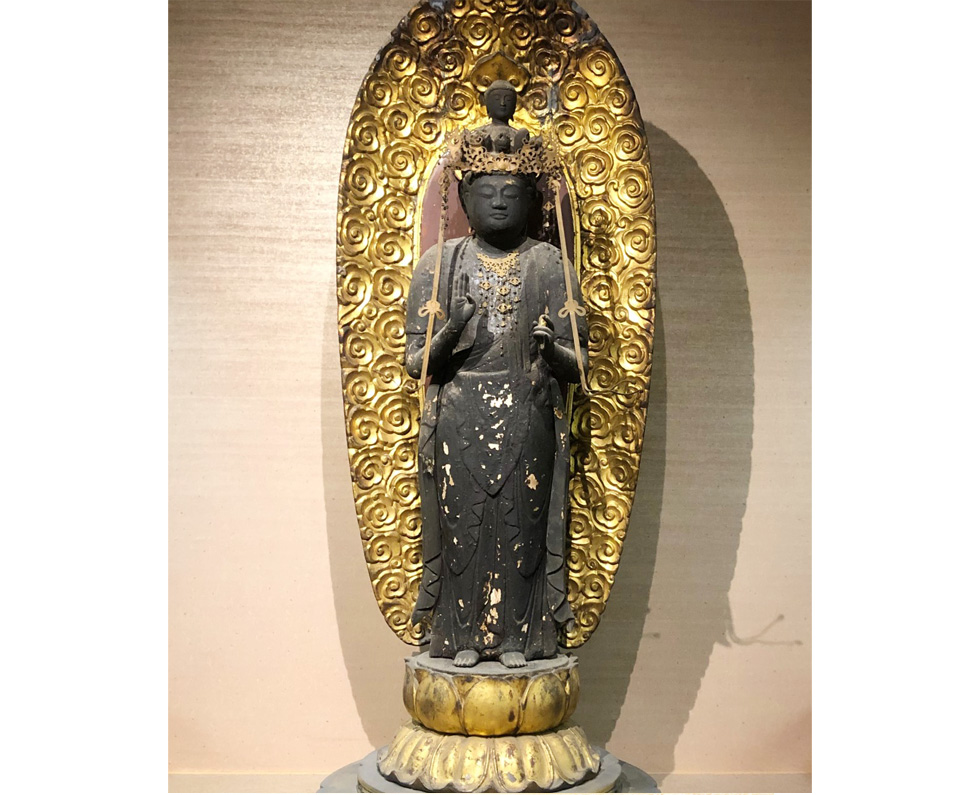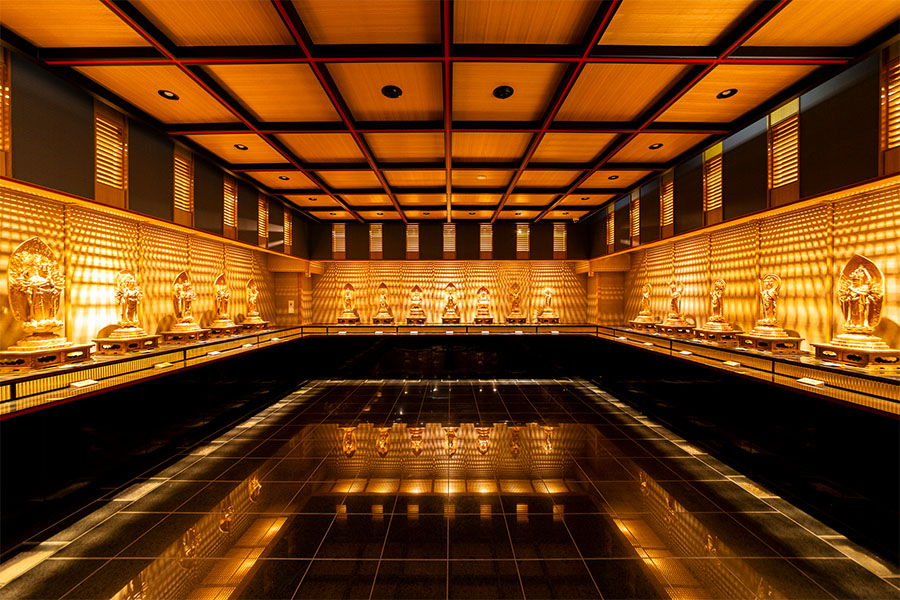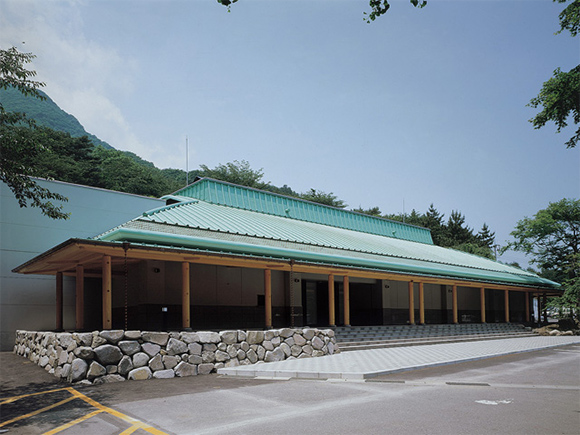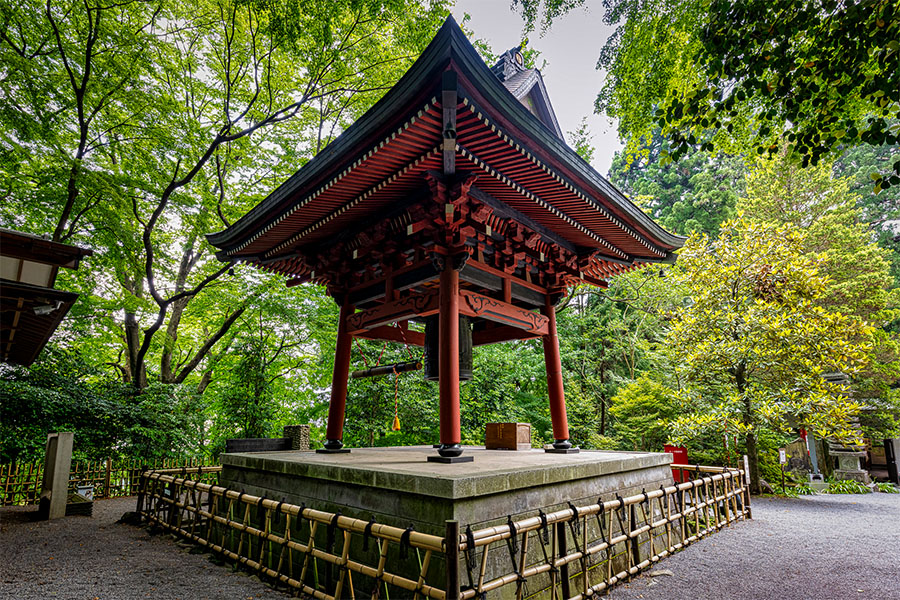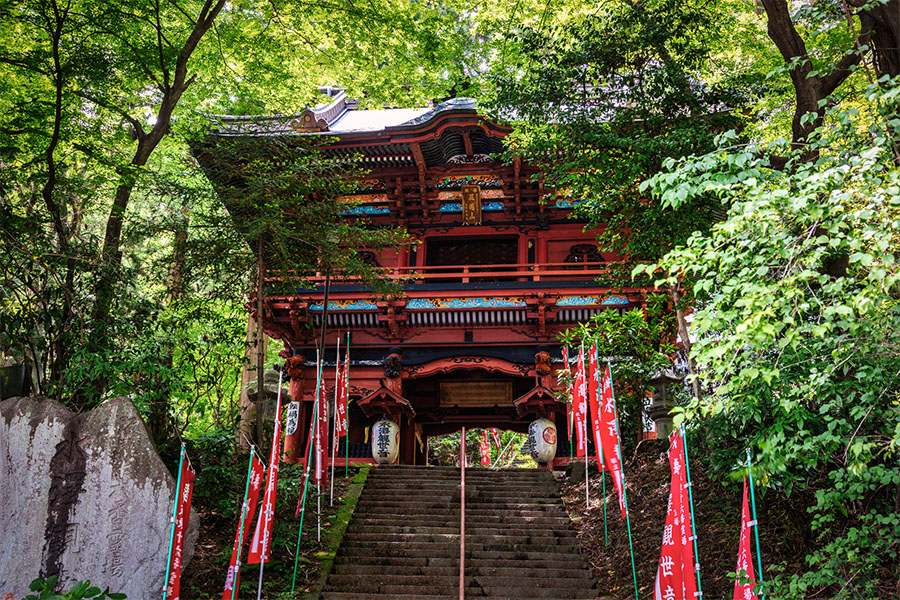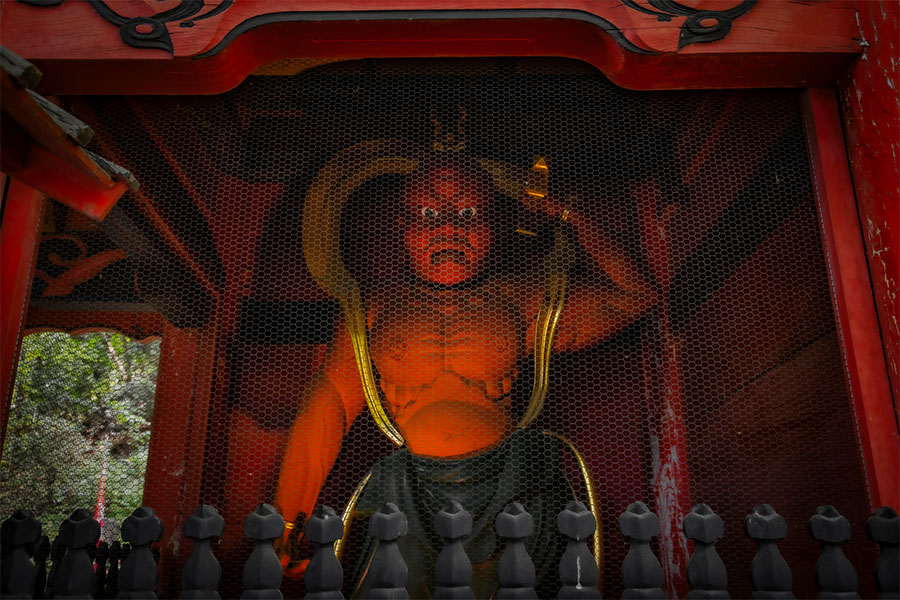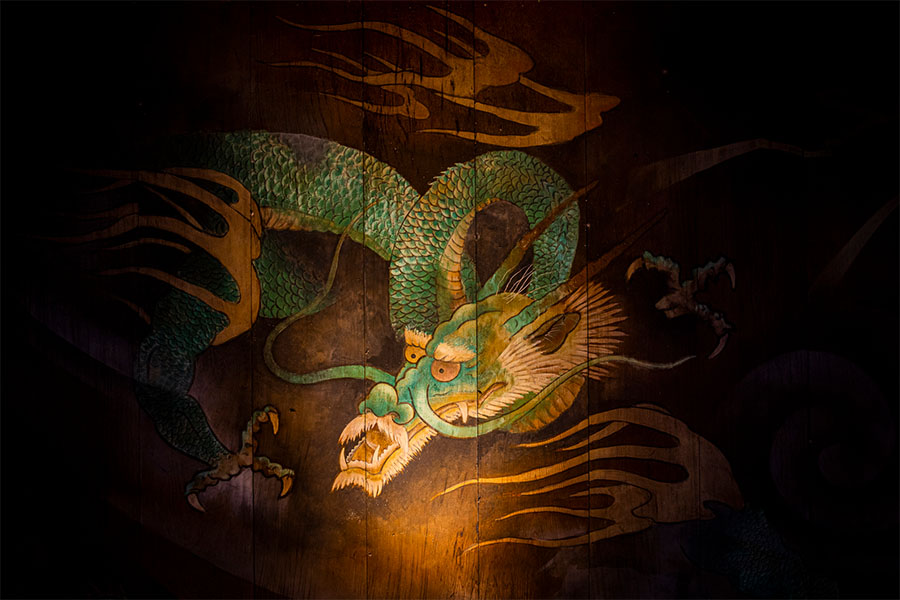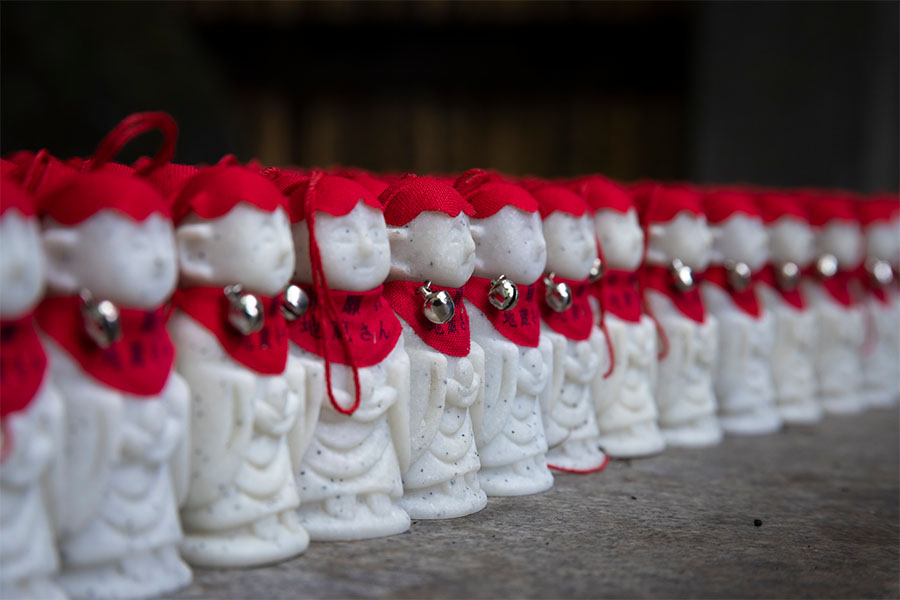1300 Years of History,
About Mizusawa Kannon Temple

Mizusawa Kannon Temple was founded by Ekan, a high ranking monk from Goryeo, more than 1300 years ago in accordance with an order of Emperor Suiko and Emperor Jitoh.
The name "Gotokuzan Mizusawadera" is from an imperial document handwritten by Emperor Suiko.
The precincts contain the Main Hall (Kannon Hall), a hexagonal two-storied pagoda (a prefectural designated important cultural property) enshrining the six good luck Jizo statues, the bell tower and the Shaka Hall.
The Shaka Hall enshrines the statues of the Shaka Triad, a sitting statue of Amida Buddha by the monk Enku (a city designated important cultural property), the statue of eleven-headed Kanzeon Bosatsu and many more.
Temple Precincts
Main Hall (Kannon Hall)
Main Hall (Kannon Hall) is at the center of the temple precincts and enshrines our principal Buddhist statue, Eleven-Headed Thousand-Armed Kanzeon Bosatsu. Eleven-Headed Thousand-Armed Kanzeon Bosatsu is known as the accommodating Kanzeon from ancient times. She offers aid and accommodates all wishes from living things. The building was completed in the middle of the Edo period (at a similar time to the hexagonal pagoda) and all sculptures have been carved out of the wood.
Rokkakudo (Jizodo)
Rokkakudo, meaning a hexagonal pagoda, has copper batten seam roofing and was completed in the middle of the Edo period. This building is a fine expression of Japanese Jizo faith. It enshrines the statues of six Jizo guarding the 6 realms (hellish, ghost, animal, human, demi-god and heavenly) and represents the Buddhist wheel of life. These statues are sitting on a rotating pedestal. If you pray with all your heart while turning this pedestal 3 times to the left, your wishes will come true.
Shaka Hall
The Shaka Hall is open to the public for free at this moment.
Preservation work on the Niomon Gate, the Nio statues and the statues of The Shaka Triad was completed in November 1994 and work on the statues of The Wind God and The Thunder God was completed in November 1995.
Preservation work on the Main Hall and the bell tower was completed in October 1997 and work on our surrogate principal Buddhist statue (the statue of Eleven-Headed Thousand-Armed Thousand-Eyed Kanzeon Bosatsu) was completed in the following November.
On this occasion, we enshrined the statues of The Shaka Triad in the Shaka Hall as a promise to protect all these important statues ever after, also enshrining a sitting statue of Amida Buddha by the monk Enku, twenty-eight Deities statues, Eleven-Headed Kanzeon Bosatsu statue and many more. Furthermore, to pray for well-being of household, business and other matters, we enshrined statues of Bandoh thirty-three Kanzeon Bosatsu, set up the Osunafumi places for pilgrimage and set the place for Kanzeon faith in the hall. Finally, the Shaka Hall was completed in July 2001.
Opening hours; 9am-4pm
Bell Tower
From ancient times, it has been said that Buddhas speak through temple bells. We express our appreciation for Mother Nature and pray for the countless Buddhas while listening to the bell in the morning and evening. You can join the ringing of the New Year’s Bell. Ring the bell, dismiss worldly desires, and welcome the new year.
Niomon Gate
The entrance path leads you to the Niomon Gate enshrining Nio, The Wind God and The Thunder God. This extremely colorful gate also enshrines the statues of the Shaka Triad in its second story.
Mizuko Jizo
The Mizuko Jizo is a guardian deity for the spirits of stillborn, miscarried or aborted children. Of course, parents wish their children’s spirits happiness and joy in heaven.
However, it is said that these unfortunate children, who couldn’t achieve their destiny of birth and the ones who left this realm due to accidents or sickness, are bullied by demons at Children's Limbo, crying ‘I miss my dad. I miss my mum.’ The Mizuko Jizo is the one who protects those children in place of their parents. Our Mizuko Jizo statue shows children clinging to the Jizo, being protected by it.
Even only praying to the Jizo is a good, small memorial service for the children. We recommend you pray and entrust your message to the Jizo and hold a small memorial service for the children whose lives couldn’t be saved in this realm.
Gassho (Hands in a prayer position)
FAQ
-
Who founded Mizusawa Kannon Temple?Ekan, a high ranking monk from Goryeo.
-
What is the difference between shrines and temples?Temples are Buddhist. Shrines are Shinto. They are different religions.
-
Teach me how to pray at the temple.There are many ways to pray. It is good enough if you pray from your heart while putting your hands in a prayer position.
-
Can foreigners be blessed?Yes, nationalities do not matter.
-
What is Bandoh thirty-three Kannon?Bandoh thirty-three Kannon was founded at the wish of Minamoto no Yoritomo. It means the 33 Kannon sacred places in the Kanto region. It is said that Yoritomo established this pilgrimage circuit after the model of sacred places in the Kansai region.
-
Does Mizusawa Kannon Temple belong to the same school as Sensoji Temple?No. Sensoji Temple belongs to the Seikannon school and Mizusawa Kannon Temple to the Tendai school.
-
How were Mizusawa Kannon Temple and the Tokugawa shogunate related?Mizusawa Kannon Temple was the Tokugawa shogunate’s place of prayer.
-
How much is the entrance fee?We don’t charge for entrance or parking.
-
How long does the visit take?It takes about 30 minutes to 1 hour.
-
It there a parking lot?There are free parking lots. The big parking lot has spaces for 30 large vehicles, 400 standard vehicles and motorcycles. There is no time limit. There is also a parking lot in front of the gate.
-
Can I bring my pet into the temple precincts?Yes, but pets are not allowed to enter the halls. It is also necessary to keep them on leads.
-
Can I bring food?Yes, you can as long as it doesn’t bother other people. And please smoke only in the designated smoking areas.
-
Can I use the photos I took in the temple precincts?Taking photos inside the halls and sacred places is prohibited. However, you can use photos you take in the temple precincts for personal use. Please apply for permission if you want to use them for commercial use.
-
Do I need a reservation to get a blessing or for a small memorial service?We don’t have a reservation system. Please register between 10:00am and 3:30pm everyday.
-
Is it possible to ask for charms and talismans to be sent home?It is possible. We send them by home delivery service. You pay the sending fee and a service fee. Please contact us by phone for details.
*Sending is limited to Japanese addresses.
Access
Mizusawa Kannon Temple
214 Mizusawa Ikaho Shibukawa City, Gunma 〒377-0103
TEL.0279-72-3619 / FAX.0279-72-4629
-
By Train(Recommended)
From JR Takasaki Station
Take Gunma Bus「Ikaho Onsen」
→「Mizusawa Kannon」From JR Shibukawa Sation
Take Gunma Bus「Ikaho Onsen」
→「Mizusawa Kannon」 -
By Car
About 20min. from Shibukawa Ikaho IC

